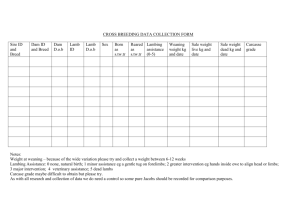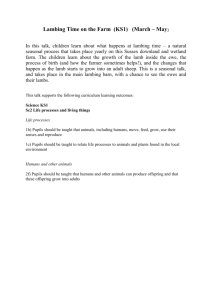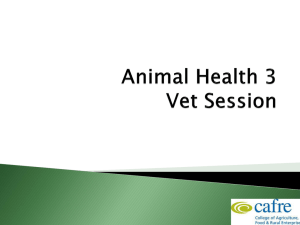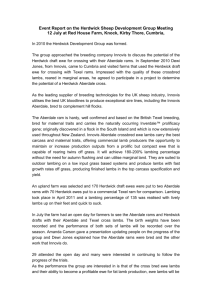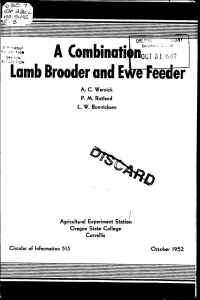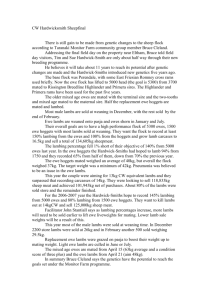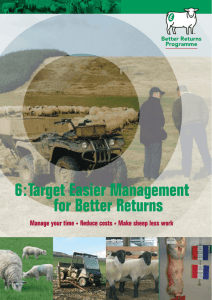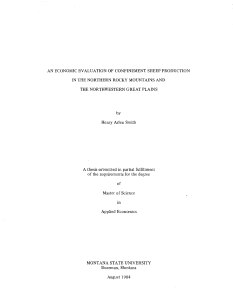Lambing supplies to have on hand
advertisement
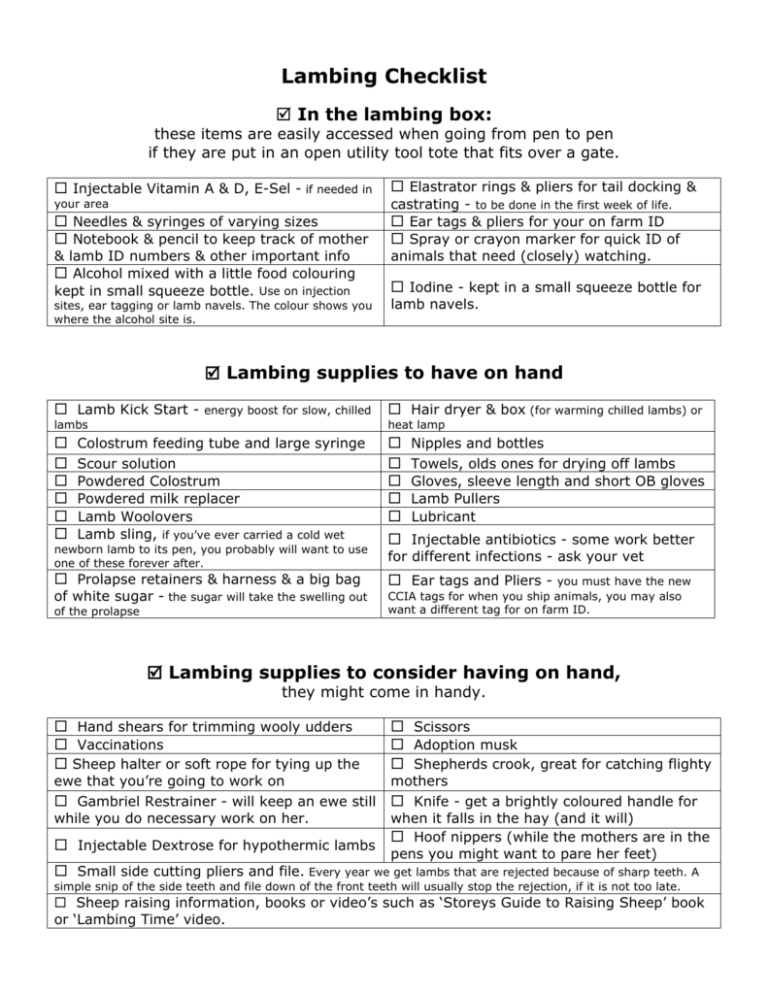
Lambing Checklist ; In the lambing box: these items are easily accessed when going from pen to pen if they are put in an open utility tool tote that fits over a gate. Injectable Vitamin A & D, E-Sel - if needed in your area Needles & syringes of varying sizes Notebook & pencil to keep track of mother & lamb ID numbers & other important info Alcohol mixed with a little food colouring kept in small squeeze bottle. Use on injection sites, ear tagging or lamb navels. The colour shows you where the alcohol site is. Elastrator rings & pliers for tail docking & castrating - to be done in the first week of life. Ear tags & pliers for your on farm ID Spray or crayon marker for quick ID of animals that need (closely) watching. Iodine - kept in a small squeeze bottle for lamb navels. ; Lambing supplies to have on hand Lamb Kick Start - energy boost for slow, chilled lambs Hair dryer & box (for warming chilled lambs) or heat lamp Colostrum feeding tube and large syringe Scour solution Powdered Colostrum Powdered milk replacer Lamb Woolovers Lamb sling, if you’ve ever carried a cold wet newborn lamb to its pen, you probably will want to use one of these forever after. Prolapse retainers & harness & a big bag of white sugar - the sugar will take the swelling out of the prolapse Nipples and bottles Towels, olds ones for drying off lambs Gloves, sleeve length and short OB gloves Lamb Pullers Lubricant Injectable antibiotics - some work better for different infections - ask your vet Ear tags and Pliers - you must have the new CCIA tags for when you ship animals, you may also want a different tag for on farm ID. ; Lambing supplies to consider having on hand, they might come in handy. Hand shears for trimming wooly udders Vaccinations Sheep halter or soft rope for tying up the Scissors Adoption musk Shepherds crook, great for catching flighty ewe that you’re going to work on Gambriel Restrainer - will keep an ewe still while you do necessary work on her. mothers Knife - get a brightly coloured handle for when it falls in the hay (and it will) Hoof nippers (while the mothers are in the pens you might want to pare her feet) Injectable Dextrose for hypothermic lambs Small side cutting pliers and file. Every year we get lambs that are rejected because of sharp teeth. A simple snip of the side teeth and file down of the front teeth will usually stop the rejection, if it is not too late. Sheep raising information, books or video’s such as ‘Storeys Guide to Raising Sheep’ book or ‘Lambing Time’ video. GOAL: To increase the number of lambs marketed by reducing newborn lamb deaths. 1. BE PREPARED. Know the lambing due date. Record all contacts between rams and ewes – accidental and planned! Use gestation table to calculate probable lambing date called Gesta Calc, available at the Canadian Co-operative Wool Growers 1-866-488-2714, E-mail: stockmans@wool.ca. 2. Have all of your lambing supplies on hand at least a week before the first lambs are supposed to arrive. Have an “obstetrical/delivery” bucket ready. 3. Have enough feed to supply all of your ewes through the last six weeks of pregnancy and through lactation. Have feed on hand for lamb creeps. Decide on growing and finishing rations. Changing feeds can cause production losses and health problems particularly during critical production periods (lactation, weaning, lamb grower / finisher). For information on sheep nutrition, contact the AgInfo Centre in your area. 4. Have enough claiming pens / maternity pens / small group hardening pens ready for the number of ewes you have to lamb. Set up pens and panels ahead of time. 5. WATCH YOUR EWES. Weather conditions usually determine how closely a mature ewe flock must be monitored. Ewe lambs give you less warning. It doesn’t take bitterly cold weather for wet, newborn lambs to die of hypothermia. 6. Have frozen ewe/cow colostrum on hand. Warm to body temperature in warm water – not in the microwave! Use a stomach tube on a 60cc syringe, or a “Lamb Reviver” to feed weak lambs. Have a bottle and baby lamb nipples ready for supplementing strong lambs that suck well (i.e. triplets). 7. Have barnsheets ready to record all births. If you don’t have a lambing record system, or ewe production cards from the CCWG at 1-866-488-2714, E-mail: stockmans@wool.ca. 8. Tag all lambs for permanent identification. You will need Canadian Sheep Identification Program tags to ship lambs to market or move ewes from the farm. Contact the Canadian Co-operative Wool Growers Limited for information and tags. For easy management use flock tags that are easily readable and/or temporary paint brands to identify ewes and lambs belonging to each other, to colour code different groups, or to identify the corral the ewe and lambs belong in. 9. Dock all lambs at 24 to 48 hours of age. Allow lambs to nurse unhindered for the first 24 hours so as to get as much colostrum as possible. Docking procedures should be as stress-free as possible. 10. Consider castrating all ram lambs not being considered for breeding purposes, particularly those born in spring and summer. 11. Watch ewes and lambs closely – cull for mismothering. Select daughters from troublefree moms. 12. Be sure to write down all animal treatments with withdrawal period and all problem sheep! Decide who is doing the work – you or your ewes.


